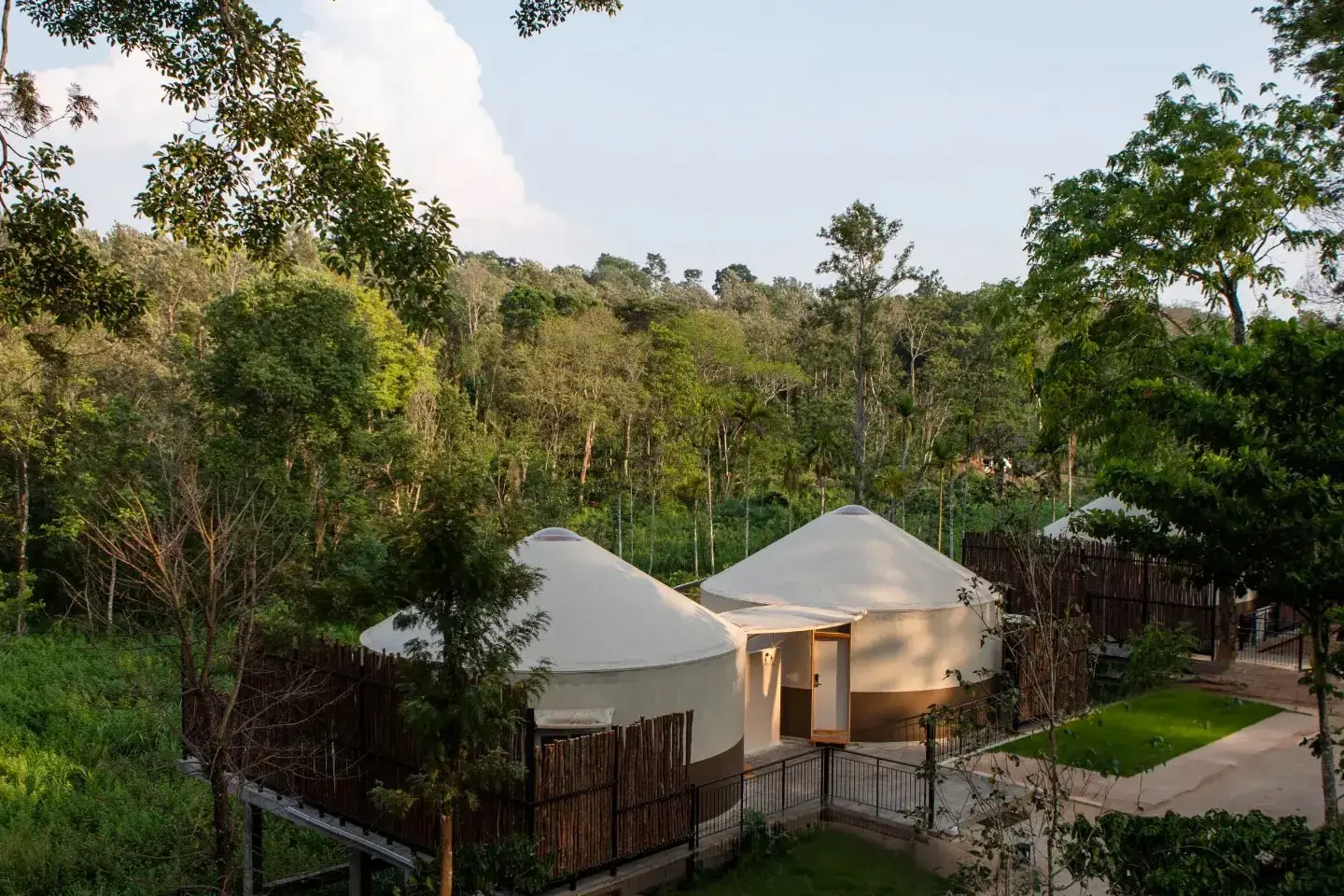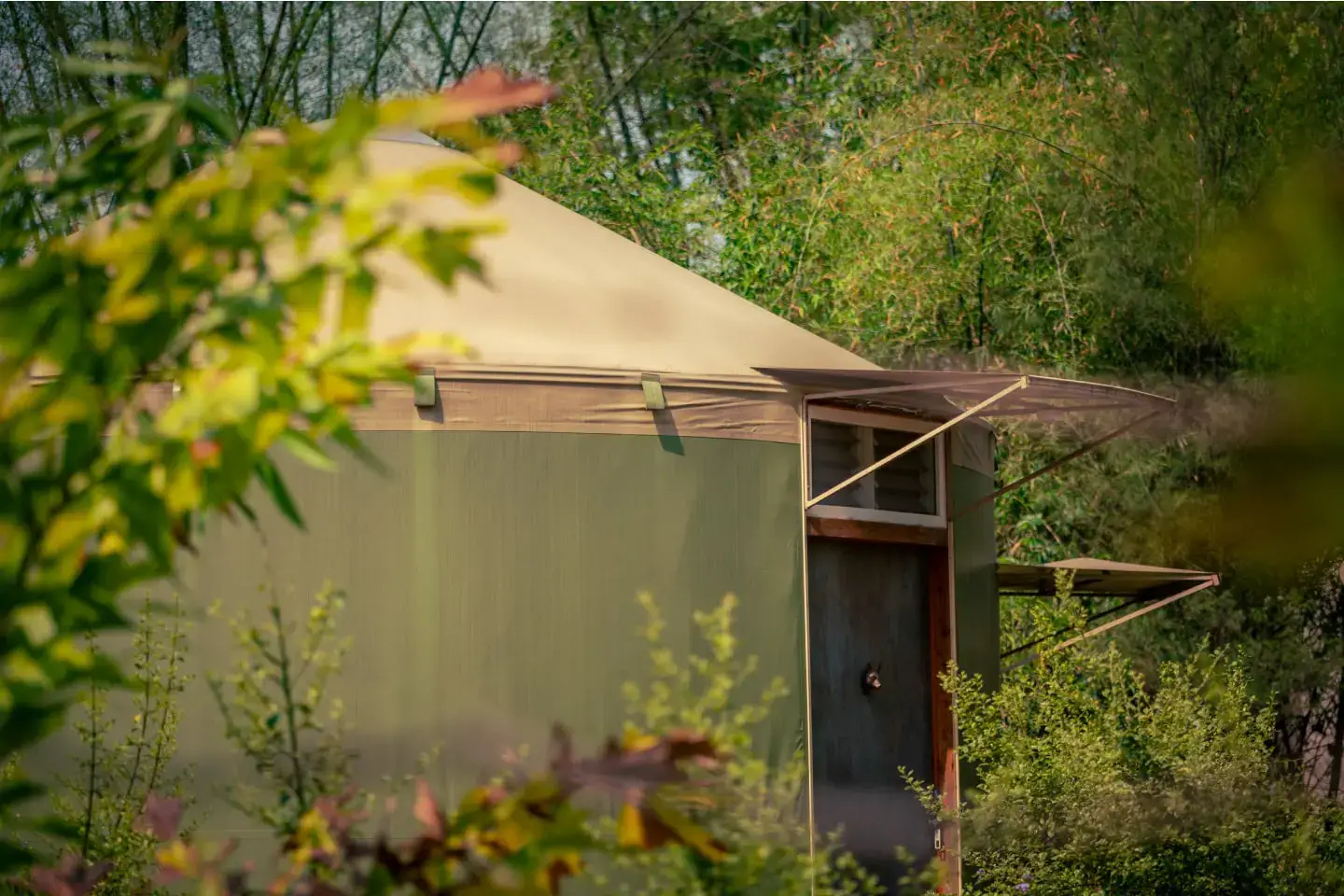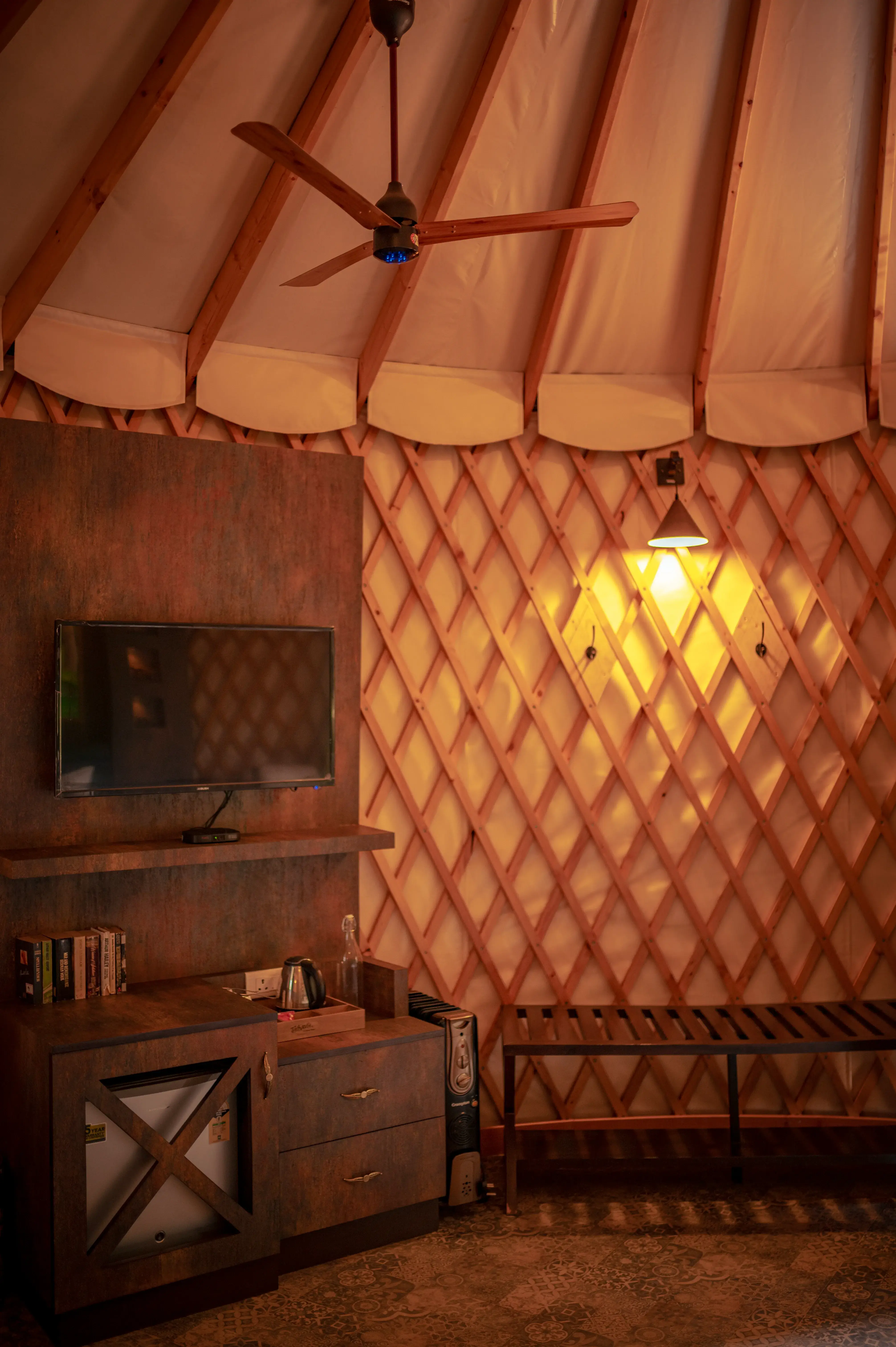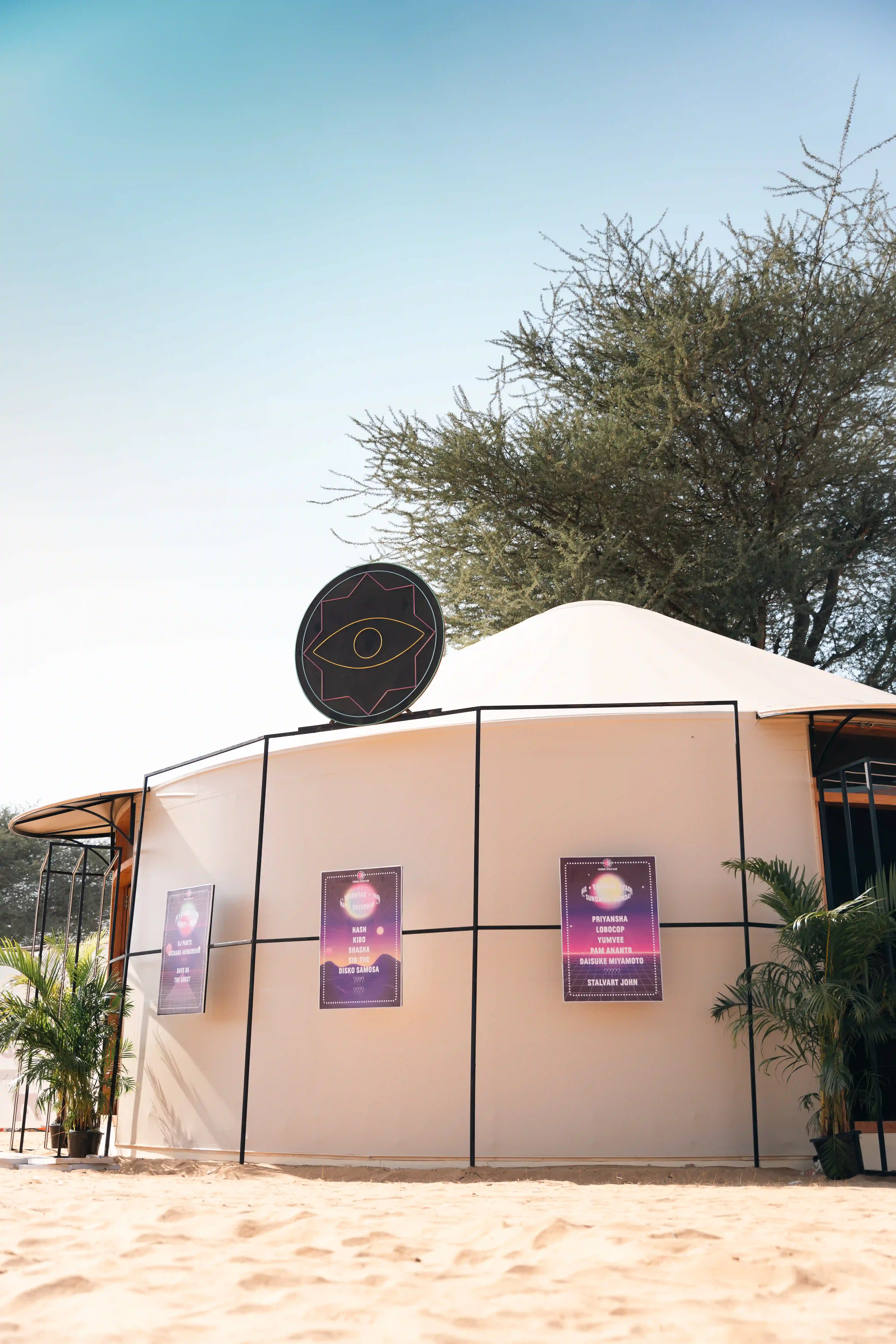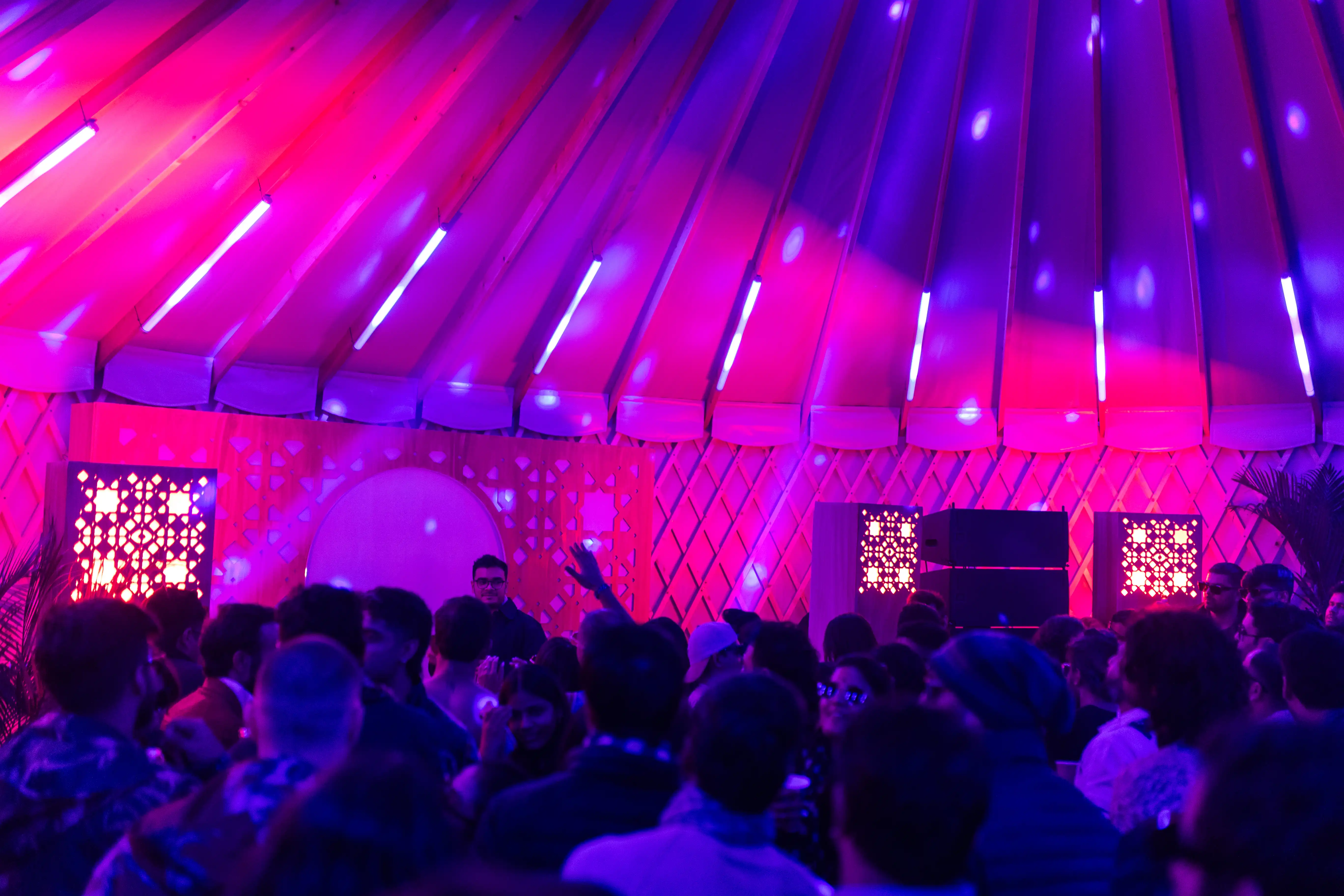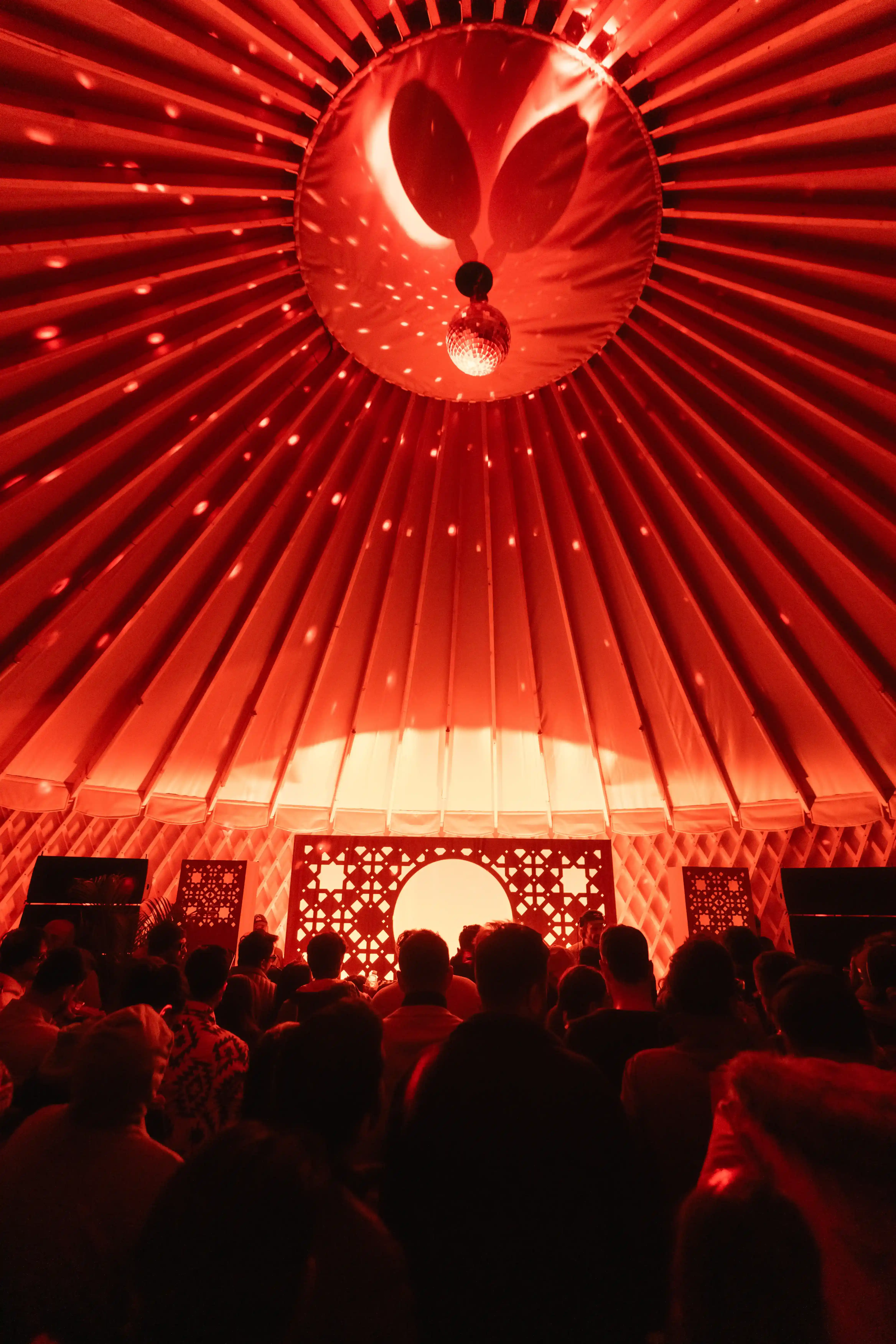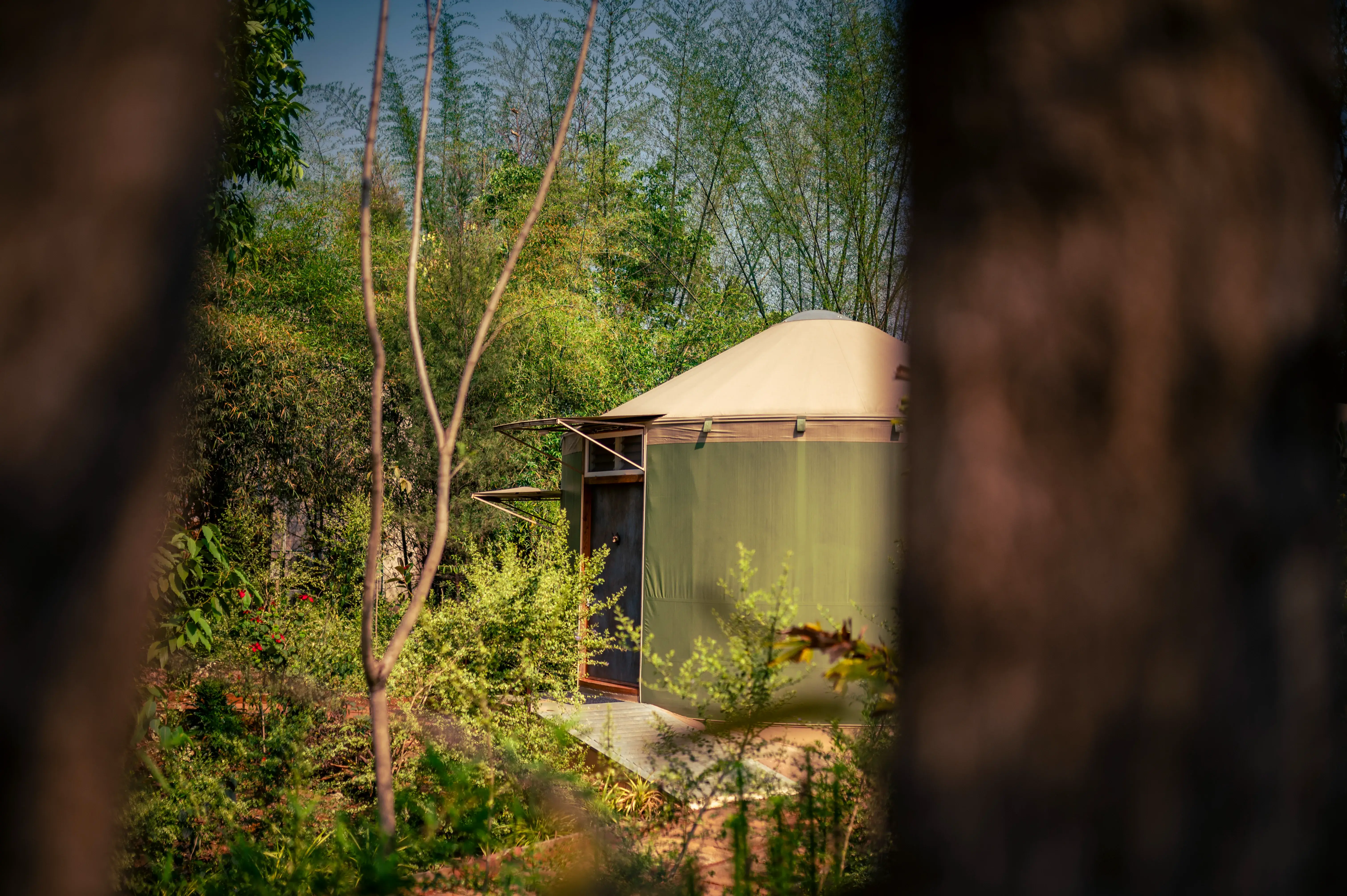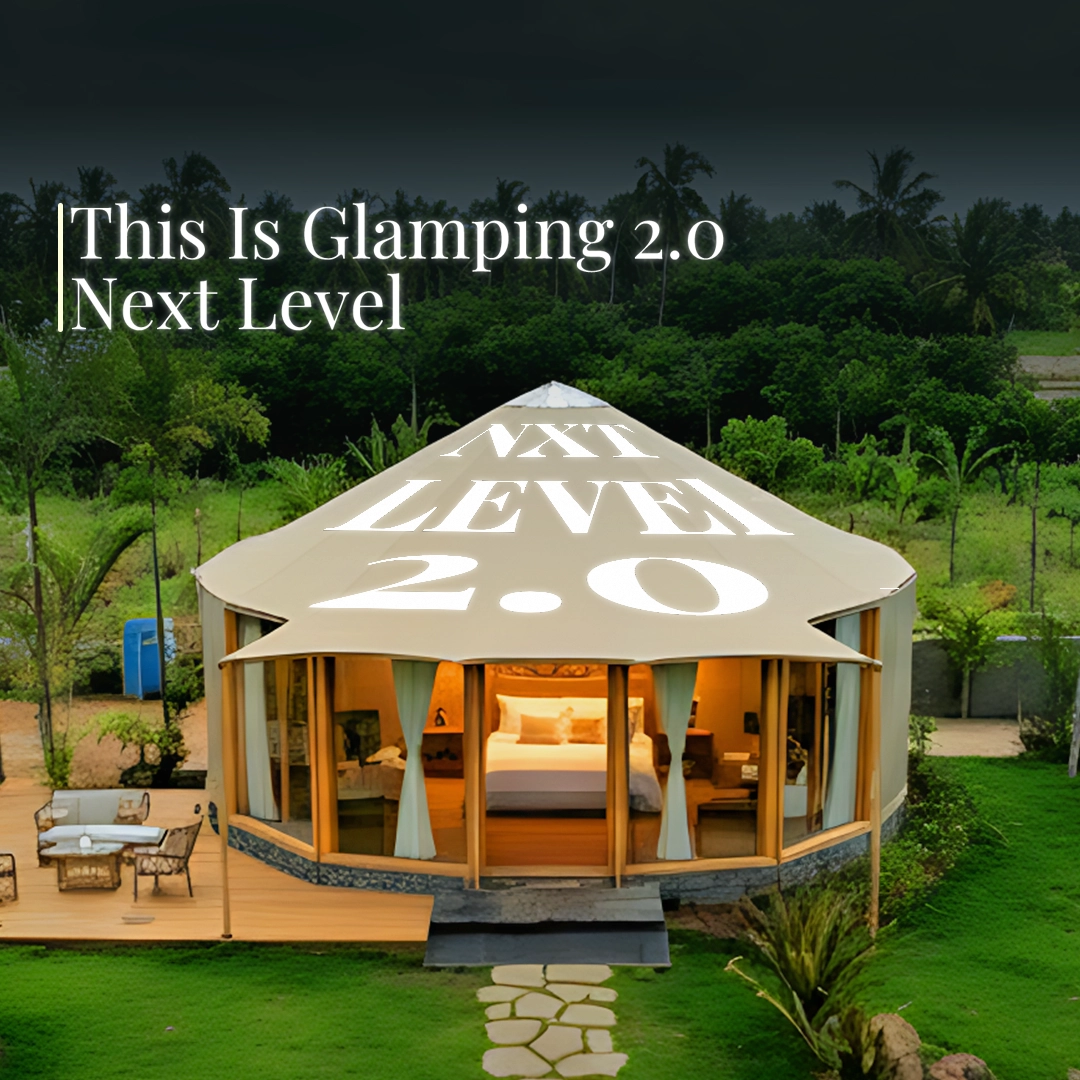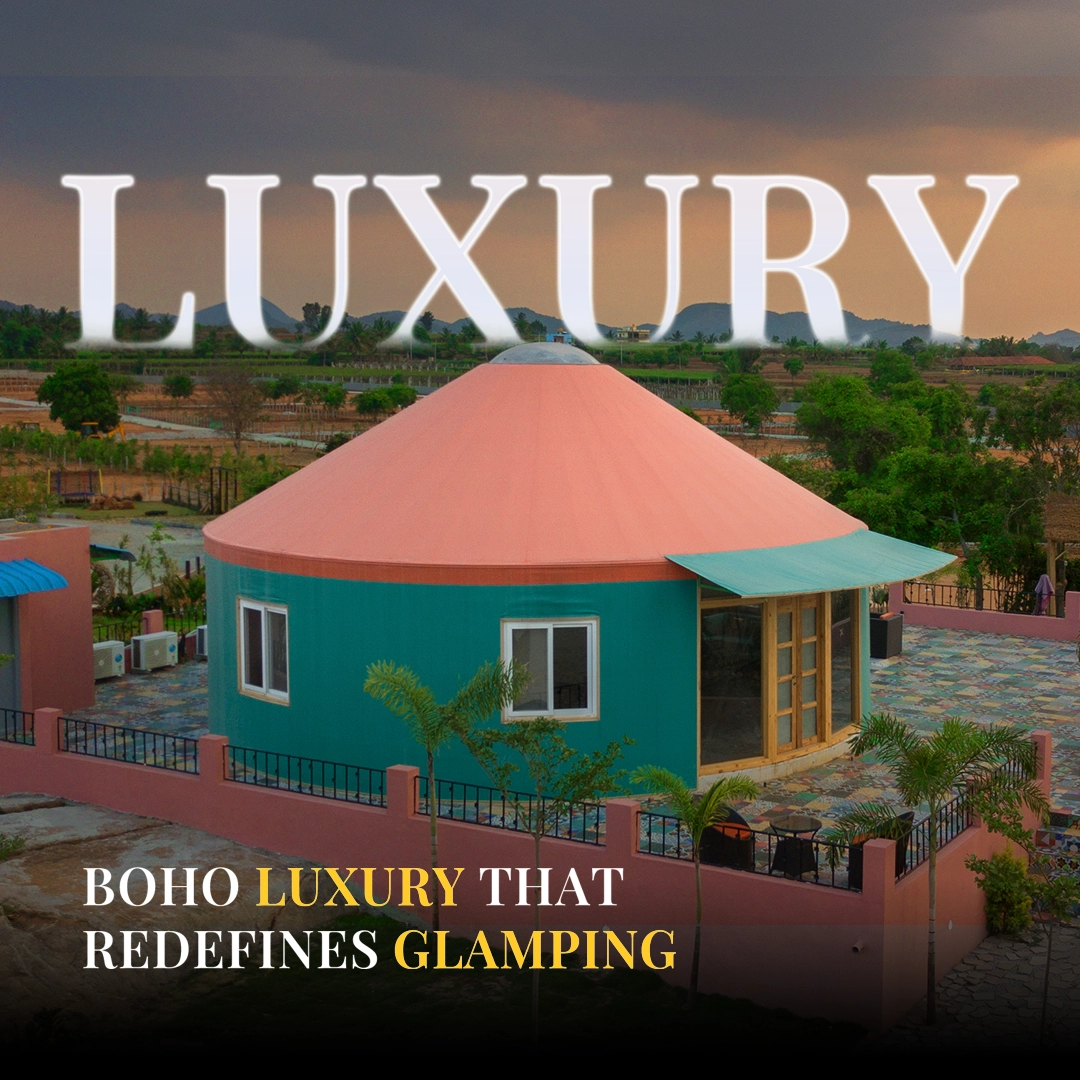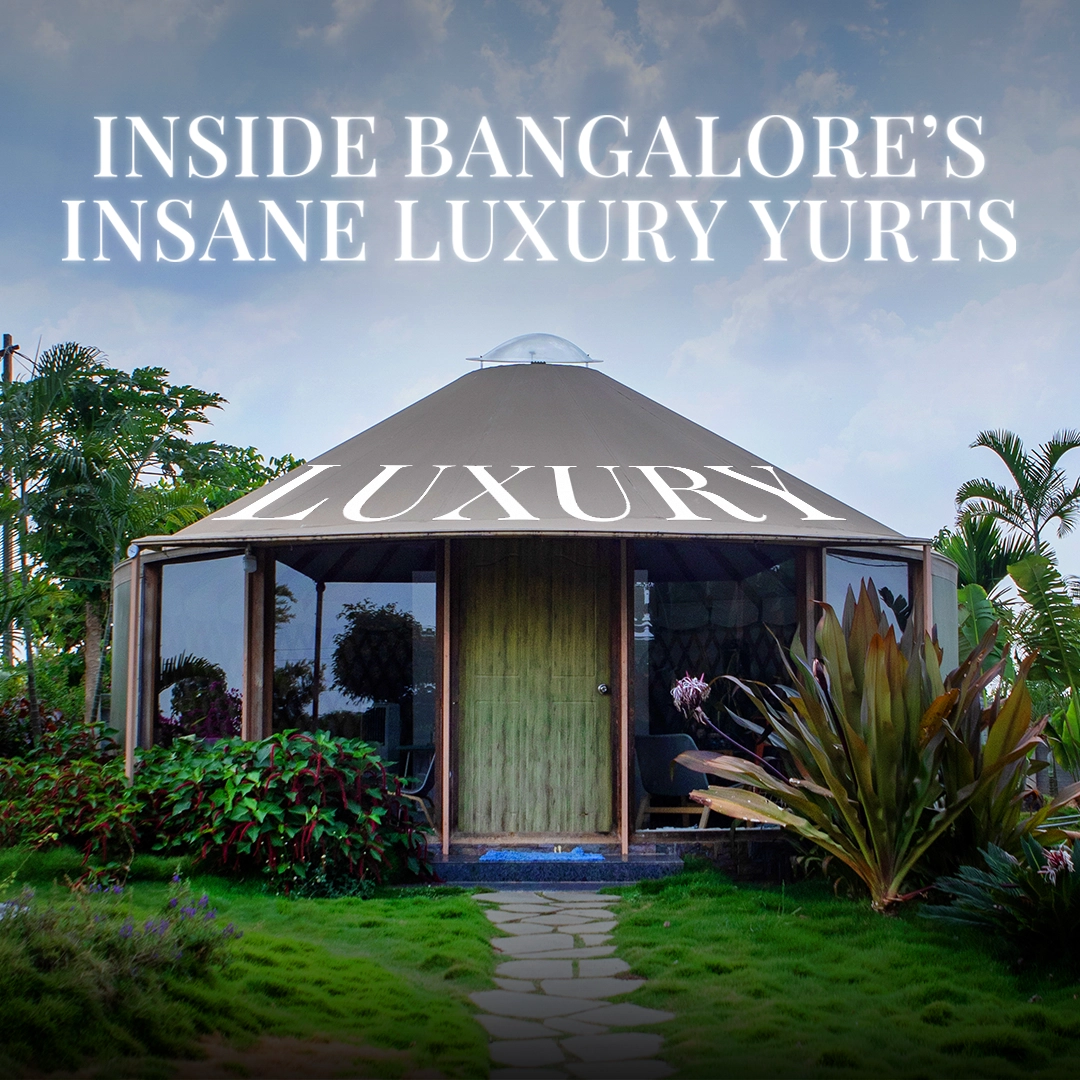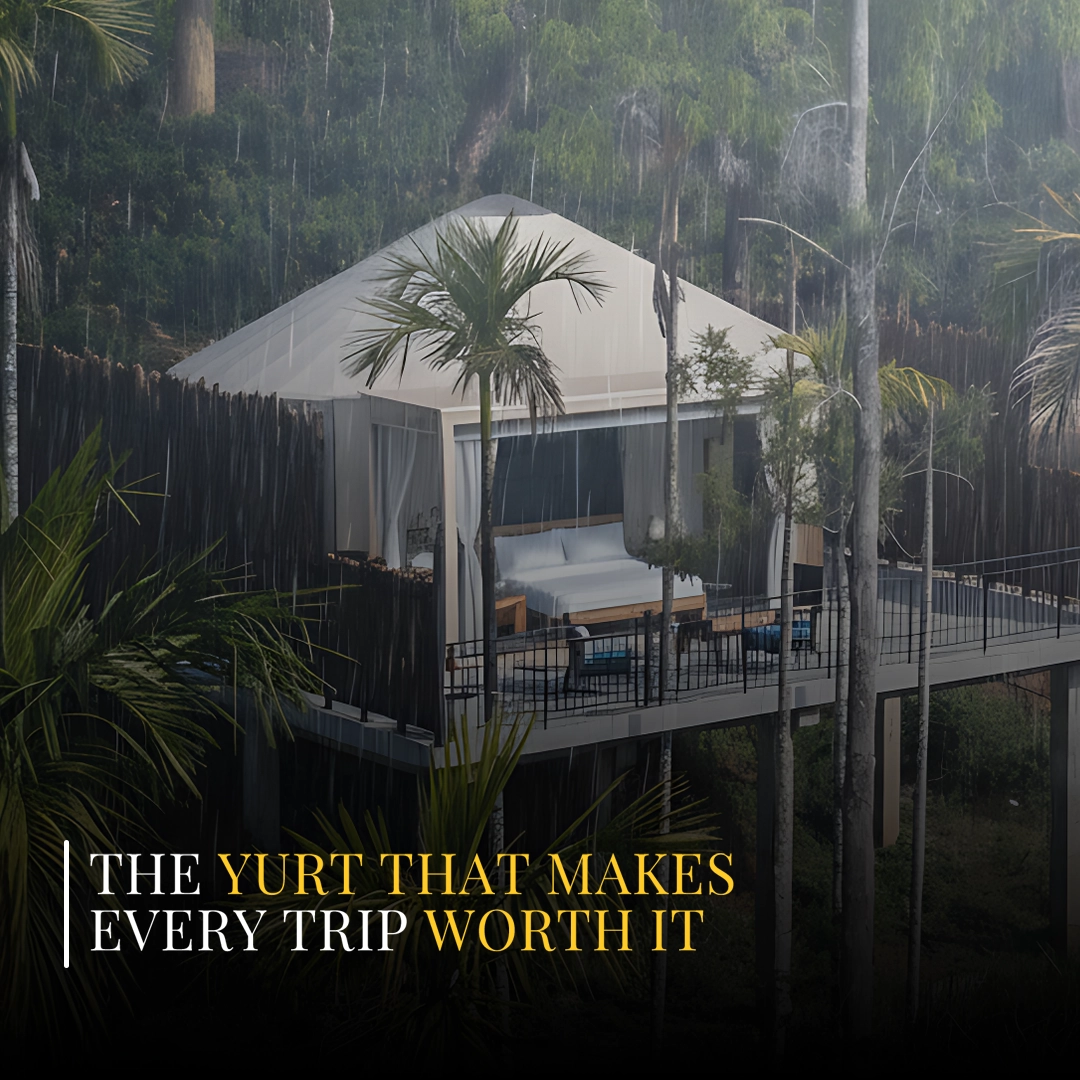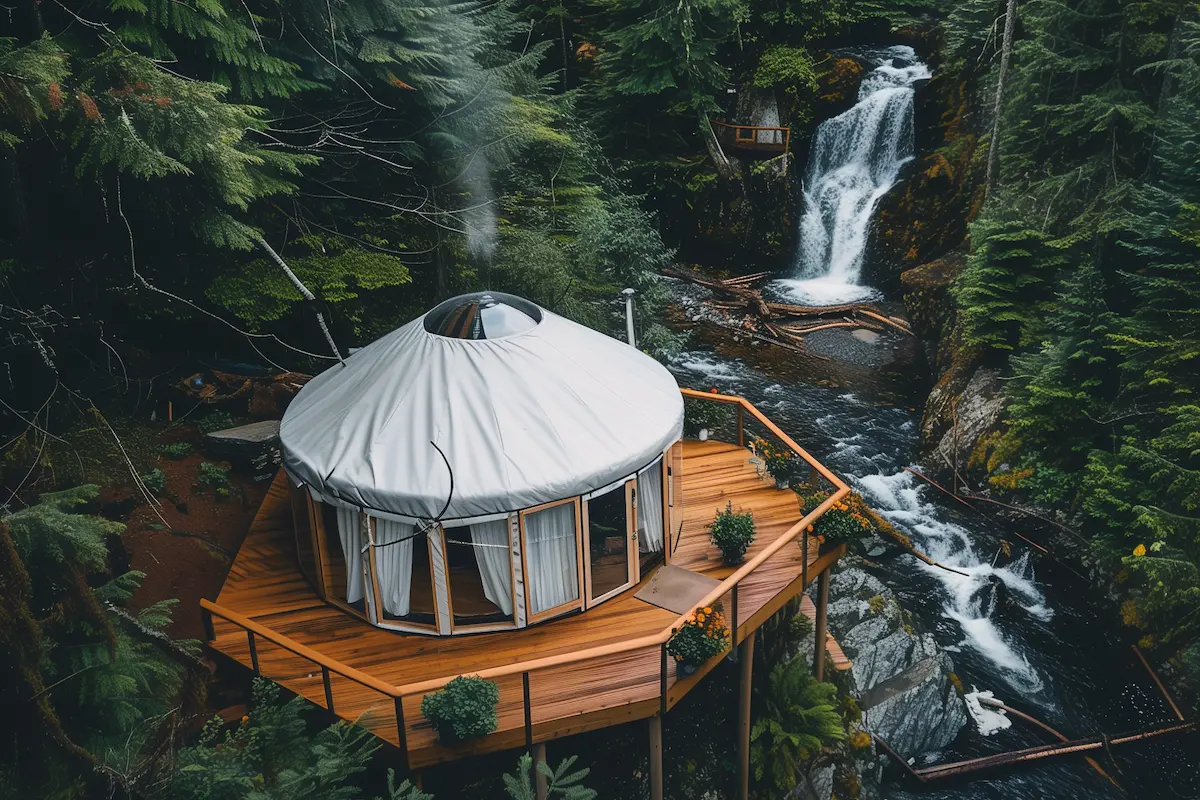
You're here because you asked a simple question: "What is a yurt?" Maybe you saw one on a travel show perched on a stunning cliffside, or you've simply seen these beautiful, round structures popping up on social media. Perhaps a friend stayed in one on vacation and won't stop talking about the experience.
Whatever the reason, you've come to the right place as this guide is designed to give you a complete answer.
We'll break down what a yurt is, piece by piece, explore why this ancient structure is suddenly everywhere, and show you what’s possible with these incredible buildings. Let's get started.
So, what exactly is a Yurt?
A yurt is a dome-shaped, portable shelter constructed with a flexible, yet robust wooden lattice framework covered in durable materials such as felt traditionally or canvas in modern yurts. The structure is held together with leather or rope ties, turning a yurt into a collapsible and portable design ideal for nomadic existence.
Think of it as a brilliant blend of a tent and a small house. Perfected over thousands of years by Central Asian nomads to be both portable and incredibly resilient, today's modern yurt elevates that ancient ingenuity with advanced engineering and materials, transforming it into a sophisticated, permanent structure that is as much a luxury home as it is a shelter.
The Anatomy of a Yurt: A Look Inside
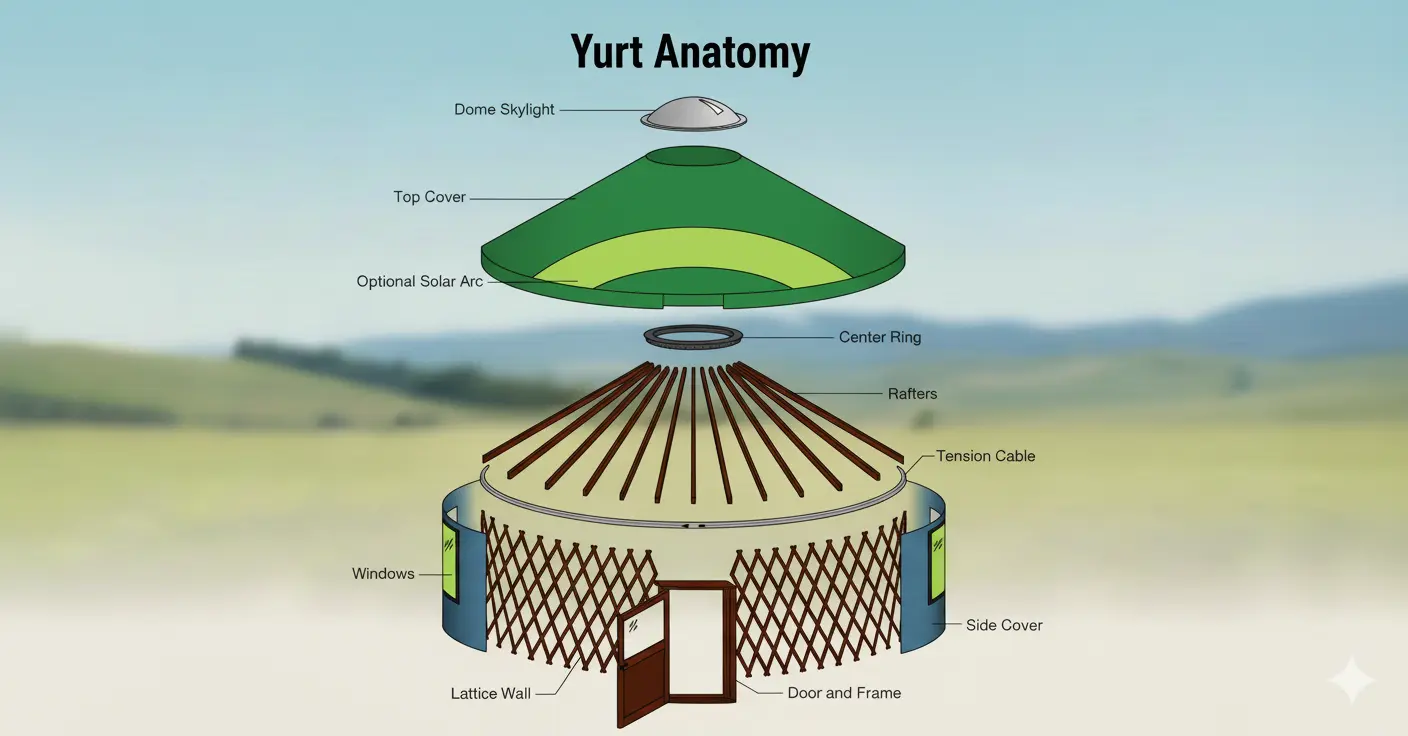
What makes a yurt so special is its self-supporting structure. It's an architectural marvel where every part works in perfect harmony. While it may look complex, it’s a beautifully simple system.
A Quick Trip Through History
The story of the yurt begins on the vast, windswept plains of Central Asia, where nomadic tribes have used these remarkable homes for at least 3,000 years. Built to withstand the harsh weather, yurts were the perfect practical shelters for families who were constantly on the move with their livestock.
The word “yurt” itself originates from a Turkic word meaning “dwelling,” but in Mongolia, they are known as “gers” and “yurta” in Russian. The Huns were among the first to use yurts as their primary housing, but the yurt's most famous resident? None other than the legendary Mongol monarch, Genghis Khan, who is said to have ruled his vast empire from within a large ger.
To understand the genius of the yurt, you have to picture the Great Steppe—a 6.5 million square kilometre expanse of open grassland stretching across Mongolia, Russia, China, and beyond, with no trees to break the fierce, gusting winds.
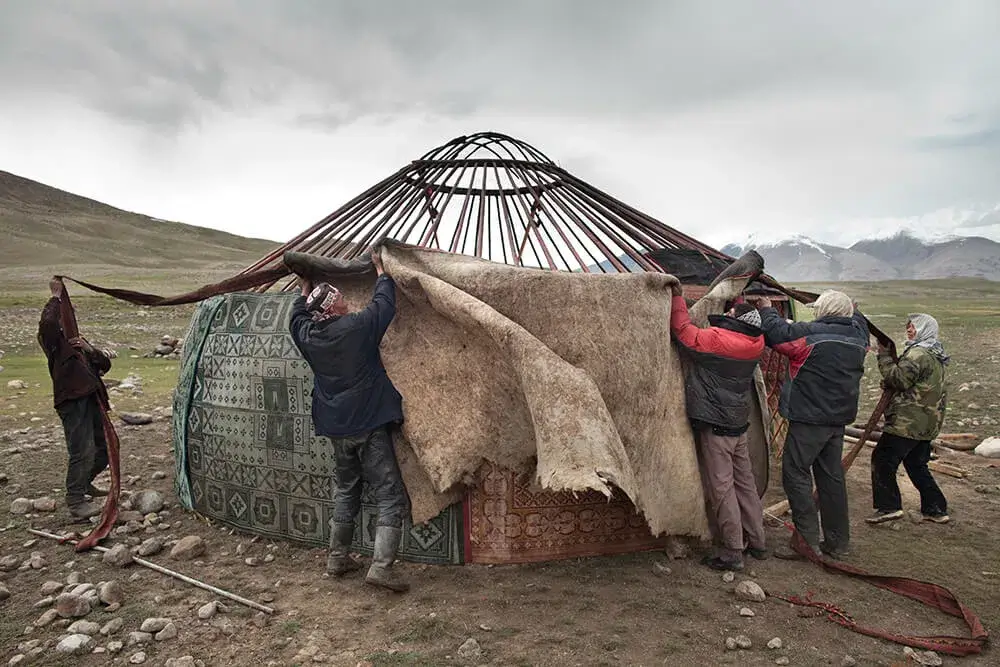
The Mongolians, being ingenious nomads, designed the round yurt specifically to resist this constant wind. It could be easily built and dismantled using locally available materials like flexible wood for the frame and animal skins or felt for the covers. The yurt, or ‘ger’, isn’t just a home; it’s a symbol of the Mongolian people's deep connection to nature, community, and their ancestral heritage. Even today, just outside the capital of Ulaanbaatar, you’ll find a ‘ger city’ with thousands of these traditional dwellings still in use.
The yurt has truly stood the test of time, offering a perfect blend of durability, comfort, and sustainability—long before it was trendy.
Why Is Everyone Talking About Yurts?
It's no accident that yurts are exploding in popularity. They are the perfect structure for our time, tapping into several major cultural shifts:
- The Experience Economy: Modern travelers and homeowners crave unique and memorable experiences. A yurt is not just a room; it's a story, an adventure, and a space that feels special.
- A Deeper Connection to Nature: The round shape and soft walls blur the line between inside and out. You feel protected from the elements while still being connected to the sounds and rhythms of the natural world.
- The Sustainability Movement: With a significantly smaller environmental footprint than a conventional house, yurts are a natural choice for those seeking a more sustainable way to live.
- The Aesthetic Appeal: The circular living space, the soaring ceiling, and the beautiful symmetry of the wooden frame make the yurt an undeniably beautiful and photogenic structure. It's a magnet for social media and a statement of style.
Modern uses of Yurt Houses
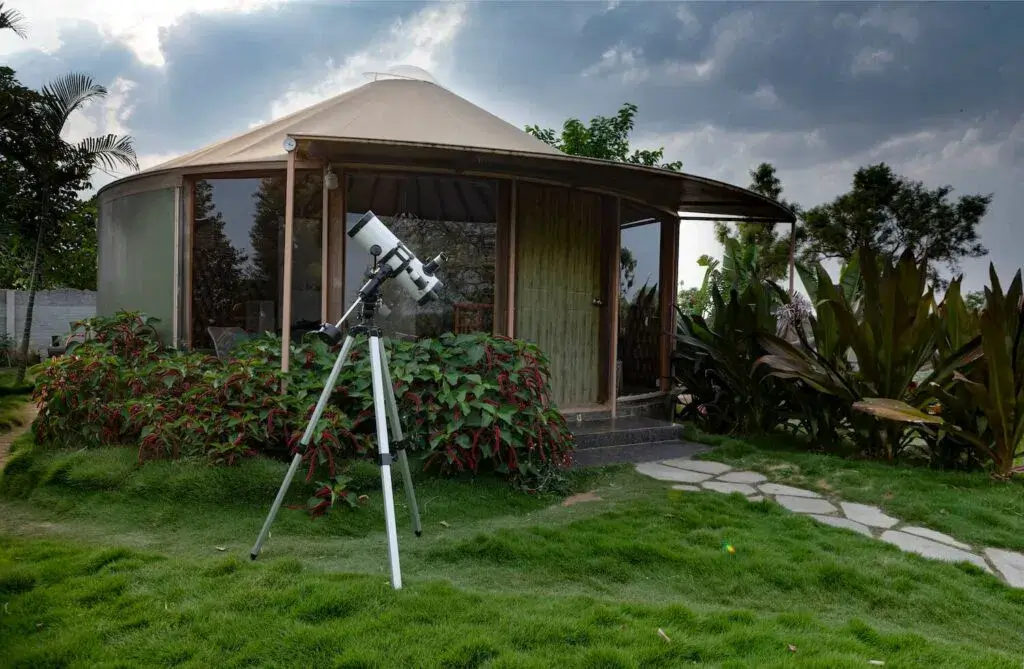
The same qualities that made the yurt a perfect home for Central Asian nomads—its strength, spaciousness, and connection to nature—make it an incredibly versatile structure for the modern world. Today, the yurt is a blank canvas for a new way of living, working, and playing.
Here are just a few of the ways these versatile structures are being used today:
1. Glamping and Yurt Camping
With their low environmental impact and ability to blend seamlessly into nature, yurts are a top choice for eco-friendly resorts and glamping destinations worldwide. Resorts often customize them with high-end facilities like soft beds and private bathrooms, making them a magnet for travelers seeking a unique and environmentally aware escape.
2. Event Spaces
The open, airy shape and natural feel of a yurt create a peaceful and memorable ambiance, making them increasingly popular for weddings, corporate retreats, and yoga workshops. Event planners love the flexible interiors and the ability to place them in beautiful outdoor settings.
3. Off-grid Living & Affordable Housing
For those seeking a more sustainable, off-grid existence, yurts are a practical solution. Outfitted with solar panels, rainwater collection, and composting toilets, they provide an environmentally responsible way to live in harmony with nature and achieve a self-sufficient lifestyle.
4. Private Retreats and Vacation Homes
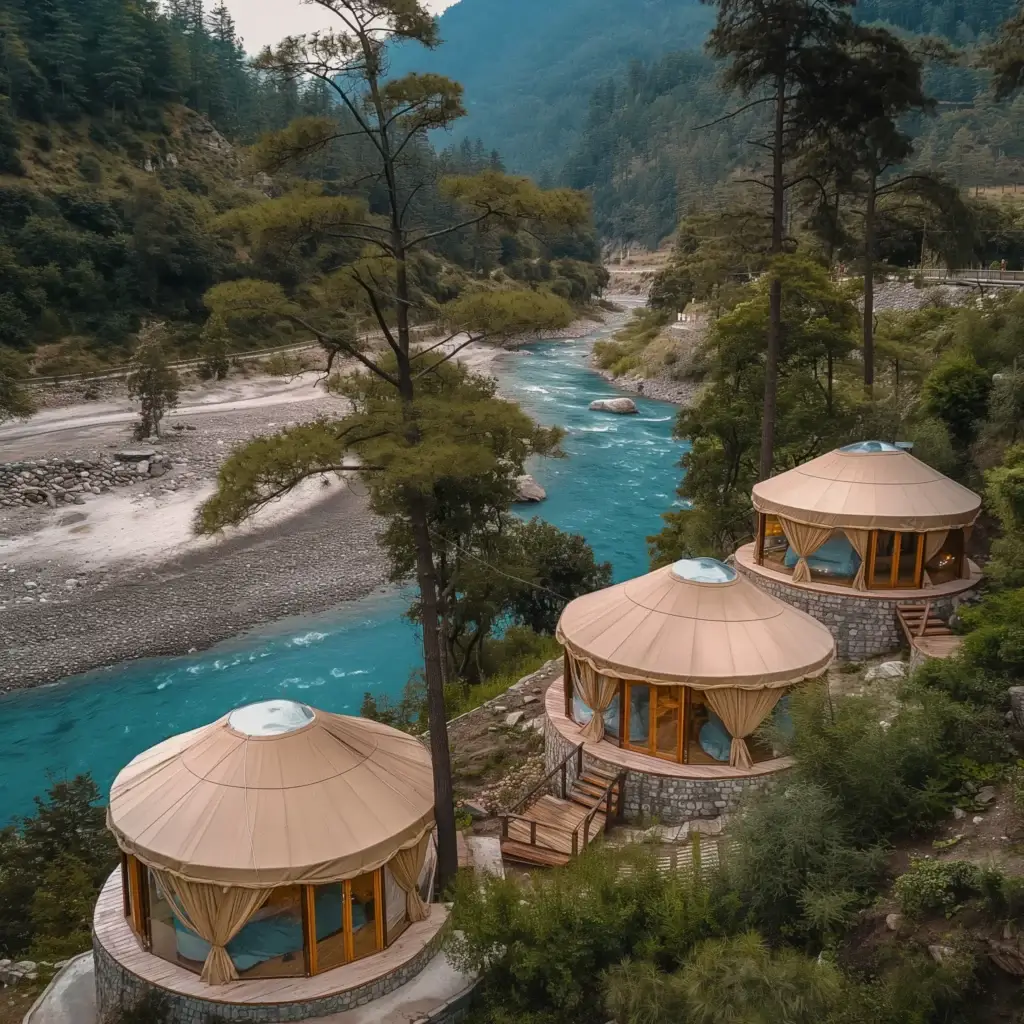
The circular design of a yurt creates a serene, open environment that is perfect for relaxation. Whether tucked in the mountains or by a lake, a yurt can be outfitted for year-round use with modern amenities like heating and insulation. Their lower cost and speed of setup make them an appealing way to create a personal vacation home and escape city life.
5. Accessory Dwelling Units (ADUs)
As cities across the country relax zoning laws to combat the housing shortage, the yurt has emerged as a smart and stylish ADU. It's a perfect solution for a "granny flat," a home for an adult child, or a high-earning backyard rental unit. A modern yurt can be installed in a fraction of the time and for a fraction of the cost of traditional construction, making it a powerful tool for homeowners to add value and space to their property.
6. Workspace and Studios
Artists, writers, and entrepreneurs are embracing yurts as creative havens. The open floor plan and abundant natural light from the central dome create a calming and inspirational work environment. They serve as the perfect unique alternative to a standard office or studio.
Your Yurt Journey: What's Your Next Step?
Curiosity is the first step. The next is to decide where your own yurt journey will take you. Whether you're looking to book a unique vacation or are dreaming bigger, here’s a guide to your next move.
Want to Experience a Yurt? Top Yurt Glamping Stays in Australia
Staying in a yurt is the best way to understand its unique magic. The feeling of the round space, the light from the central dome—it’s something you have to experience. To help you find an authentic getaway, we've curated a list of four diverse and highly-acclaimed destinations from across the Australia, all known for their incredible yurt accommodations.
1. For a Coastal Eco-Luxury Escape: Noosa Eco Retreat, Queensland
Set amid pristine bushland with panoramic views of Mount Cooroora, Noosa Eco Retreat features six spacious, self-contained, eco-luxe yurts. Each has a private deck, king bed, and full kitchen. Guests enjoy peace, privacy, and access to Noosa’s hiking trails and beaches—ideal for couples seeking a sustainable yet indulgent getaway.
2. For a Romantic Seaside Stay: The Hideaway, Cabarita Beach, New South Wales
With fairy lights, seaside breezes, and trendy décor, The Hideaway’s yurts create a relaxed, bohemian retreat by the sand. Located just minutes from Byron Bay, the property offers stylish communal spaces, morning yoga, and easy beach access, making it perfect for both couples and groups.
3. For a Cozy Victorian Escape: Yurt Hideaway, Mornington Peninsula, Victoria
This handcrafted timber-floored yurt offers a serene suburban glamping experience with a private courtyard, garden kitchen, and luxurious bathroom a few steps from the yurt. Powered by solar energy, it combines sustainability with relaxation—ideal for couples seeking a boutique Victorian getaway.
4. For an Off-Grid Forest Retreat: Jarrahdale Forest Yurt, Western Australia
Nestled within peaceful woodlands south of Perth, this rustic yurt offers a pure off-grid experience with solar-powered lighting and an earthen floor. Guests share a communal kitchen and shower area but enjoy full immersion in the quiet forest atmosphere—a true escape from modern life.
Discover more highly rated Yurt Glamping destinations in Australia
Ready to Buy a Yurt? A Look at the Australian Market
If that yurt stay has you dreaming of owning one, the next step is to understand your options. The Australian market has a range of fantastic manufacturers, each with different strengths. To navigate the landscape and see how different companies compare on price, features, and overall value, we encourage you to read our in-depth guide:
The Best Yurt Companies in the Australian: Buyer's Guide
Curious to See How a World-Class Yurt is Made?
We know that not everyone who is curious about yurts is ready to buy one. Frankly, we're just passionate about what we do, and we love showing it off. So, whether you're a serious investor or just a design enthusiast, we invite you to our virtual factory tour.
After you see the engineering and craftsmanship that goes into these, we bet you'll be designing your own personal Bat Cave or She-Shed in your head.
Schedule Your Personal Virtual Factory Tour Today
Benefits of Owning a Yurt House
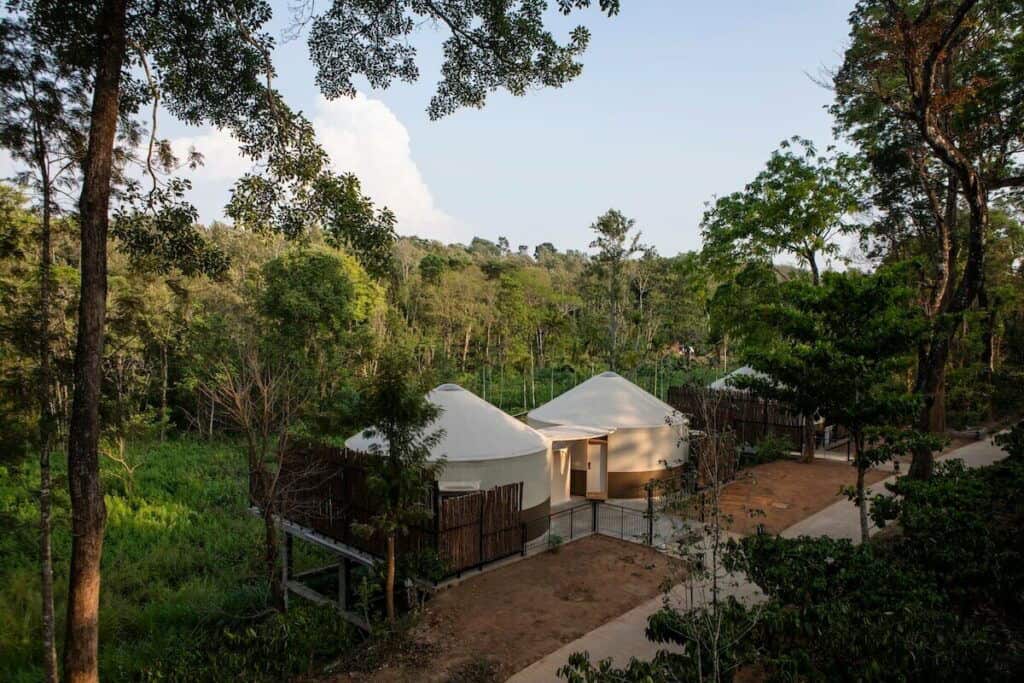
- Eco-friendly: Yurts use natural or sustainable materials, reducing environmental impact and promoting a closer connection to nature.
- Cost-effective: They offer a more affordable alternative to traditional homes, making them ideal for resorts or personal retreats.
- Portable: Easy to assemble, disassemble, and transport, yurts suit mobile lifestyles or changing landscapes.
- Durable: Built to withstand harsh weather conditions, including strong winds and heavy snow.
- Energy-efficient: The circular design promotes even heat distribution, reducing the need for excessive heating or cooling.
- Versatile: Yurts can serve as homes, studios, guest rooms, or spa spaces, offering flexibility in use
- Fast setup: Yurts can be erected quickly, ideal for resorts or temporary accommodations.
Misconceptions about Yurt homes
Even though yurts are gaining popularity, still face some misconceptions!
Misconception #1: Yurts are not Durable
Fact: One most common misconception is that yurts lack durability compared to traditional buildings. But the truth is modern yurts are specially built to withstand extreme weather conditions like storms or heavy rainfall and can provide a secure and cosy living space.
A real-world example of this was seen in Japan, where a yurt survived a powerful tornado while surrounding structures were damaged. This demonstrates that with correct design and materials, yurts may provide a secure and warm living area that rivals the robustness of standard dwellings.
Misconception #2: Yurts can’t be Luxurious
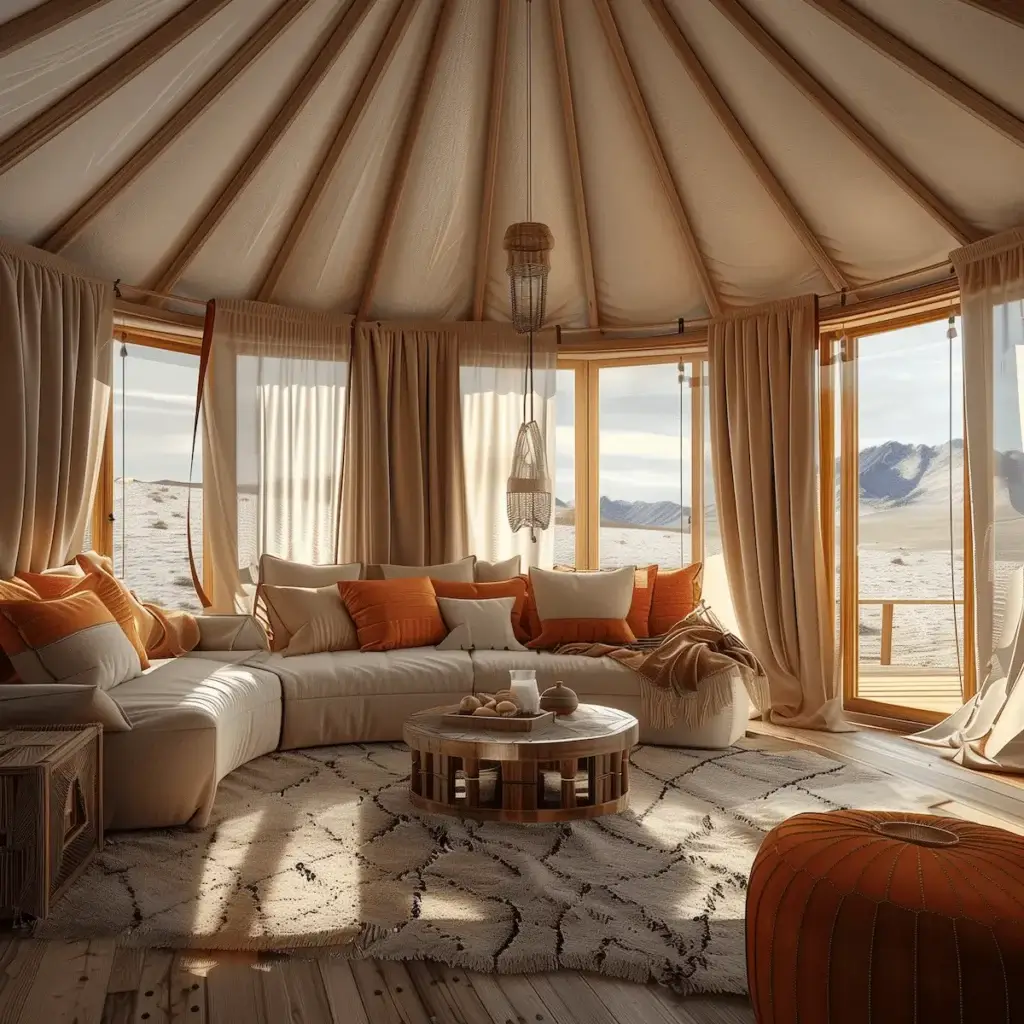
Fact: Another misconception is that yurts are purely rustic and lack the necessary amenities for a luxurious experience. On the contrary, they can be fully customized with modern amenities.
Far from basic, yurts can include everything from luxurious bathrooms and kitchens to climate control and Wi-Fi. With options for high-end furnishings, skylights, and even custom interiors, yurts offer a perfect blend of natural charm and modern comfort.
Misconception #3: Yurts lack insulation
Fact: Some people think yurts don’t offer good insulation and are uncomfortable in extreme weather. In reality, modern yurts are highly insulated, with layers of felt, wool, or advanced synthetic materials that keep them cool in summer and warm in winter.
With options for added insulation, heating systems, and ventilation, yurts can provide a comfortable living environment year-round, making them adaptable to various climates.
Conclusion: A Structure for the Future, Rooted in the Past
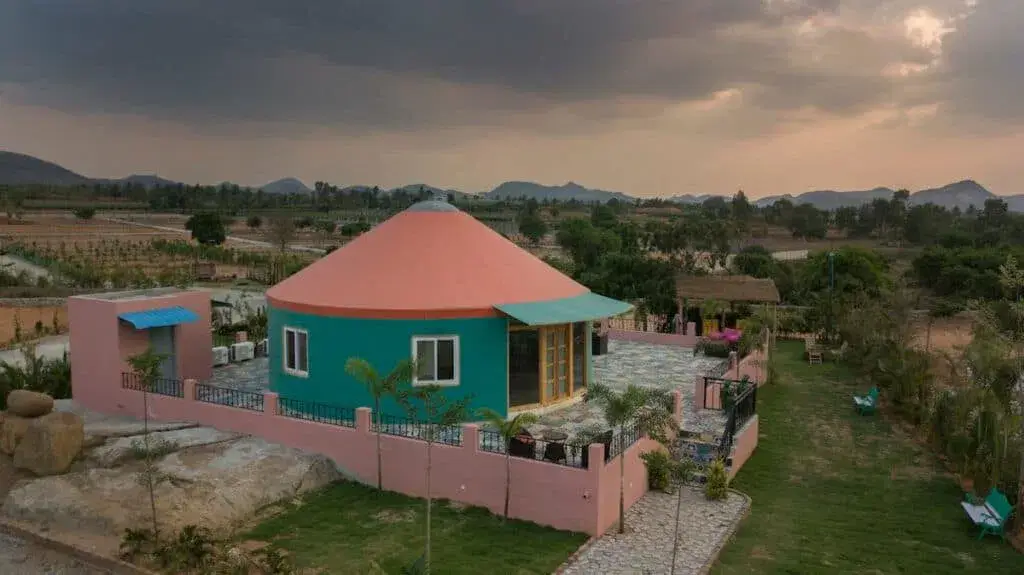
So, what is a yurt? As we've seen, it's more than just its parts. It's a connection to a 3,000-year-old history of resilience and a powerful answer to our modern search for a life that is more sustainable, more experiential, and more connected to the world around us.
In today’s world of travel and ecotourism, this unique combination of nature and convenience has made the yurt a top choice for Eco-conscious travellers. With the growth of glamping, these once-nomadic dwellings have transformed into luxurious destinations, with resorts using them for everything from private villas to spa rooms.
At The Out Factory, we are deeply inspired by this legacy. Our entire mission is to provide customizable yurt solutions that honor the soul of the traditional Ger while re-engineering it for the 21st century. Whether you’re in the resort industry seeking luxurious accommodations that can be installed in as little as 72 hours, or an individual searching for an eco-friendly, multipurpose living option, we are ready to help.
The yurt’s rich history, combined with its versatile structure, brings an element of adventure, sustainability, and luxury to the modern world. It is a structure for the future, rooted in the past, and we are proud to be building its next chapter.
📊 View Our Pricing Page | 🏡 Explore Our Yurt Specifications | 🔨 See Our Yurt Installations
FAQs
1. How are yurts different from tents or cabins?
Yurts offer a unique combination of portability, durability, and spaciousness that sets them apart from traditional tents. Unlike cabins, yurts can be easily disassembled and moved to different locations, making them highly versatile. Yurts give comfort just like a home.
2. How long does a yurt last?
A high-quality, modern yurt with architectural fabrics and a solid wood frame has a lifespan of 15 years or more with proper care. The structural frame can last for many decades.
3. Are yurts waterproof?
Yes. Modern yurts use advanced, waterproof outer fabrics, similar to those used in high-end architectural and marine applications, to ensure a completely dry and protected interior.
4. Can you live in a yurt year-round?
Absolutely. With a proper insulated platform, a full insulation package in the yurt itself, and a suitable heating and cooling source, a yurt can be a comfortable home in any climate.
I don't just say this as a manufacturer; I say it from personal experience. I'm Praveen, the founder of The Out Factory, and I live in one of our yurts full-time. My own yurt home is attached to our TOF Experience Centre. When you schedule a virtual tour of our factory, you're not just seeing where our yurts are made; you can also get a glimpse of how they are lived in, day in and day out.
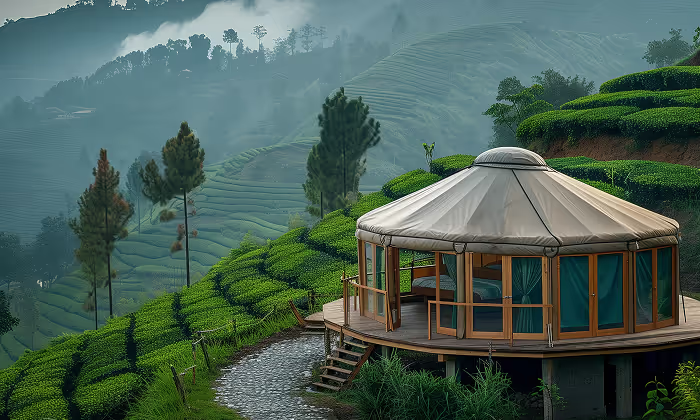
uniquely yours?
Explore Limitless options in our 3d yurt builder
and bring your vision to life
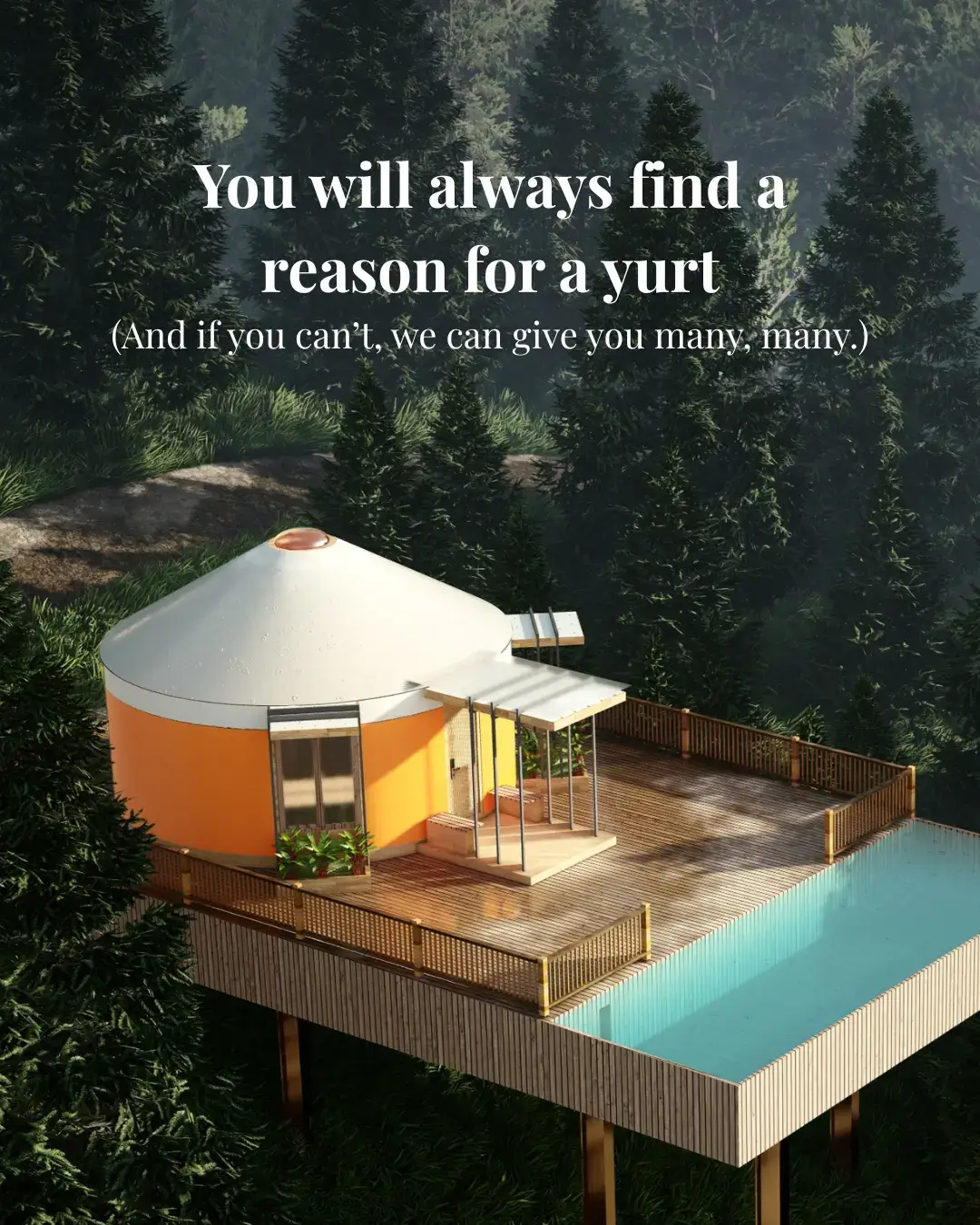

.png)



